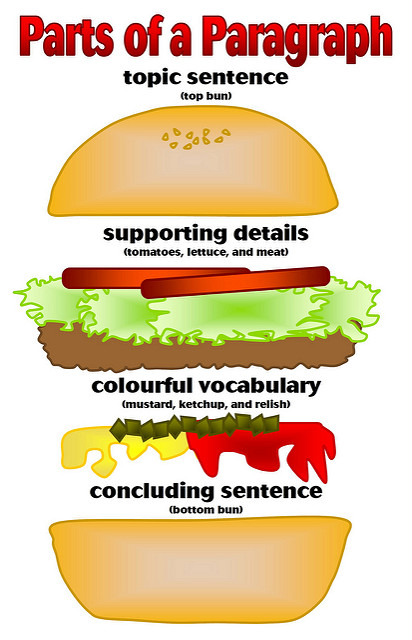Introduction
Learning Objectives
- identify explicit thesis statements in texts
- identify implicit thesis statements in texts
- identify strategies for using thesis statements to predict content of texts
Being able to identify the purpose and thesis of a text, as you’re reading it, takes practice. This section will offer you that practice.
One fun strategy for developing a deeper understanding the material you’re reading is to make a visual “map” of the ideas. Mind maps, whether hand-drawn or done through computer programs, can be fun to make, and help put all the ideas of an essay you’re reading in one easy-to-read format.
Your understanding of what the “central” element of the mind map is might change as you read and re-read. Developing the central idea of your mind map is a great way to help you determine the reading’s thesis.

Hand-drawn Mind Map
Locating Explicit and Implicit Thesis Statements
In academic writing, the thesis is often explicit: it is included as a sentence as part of the text. It might be near the beginning of the work, but not always–some types of academic writing leave the thesis until the conclusion.
Journalism and reporting also rely on explicit thesis statements that appear very early in the piece–the first paragraph or even the first sentence.
Works of literature, on the other hand, usually do not contain a specific sentence that sums up the core concept of the writing. However, readers should finish the piece with a good understanding of what the work was trying to convey. This is what’s called an implicit thesis statement: the primary point of the reading is conveyed indirectly, in multiple locations throughout the work. (In literature, this is also referred to as the theme of the work.)
Academic writing sometimes relies on implicit thesis statements, as well.
This video offers excellent guidance in identifying the thesis statement of a work, no matter if it’s explicit or implicit.
Topic Sentences
We’ve learned that a thesis statement conveys the primary message of an entire piece of text. Now, let’s look at the next level of important sentences in a piece of text: topic sentences in each paragraph.
A useful metaphor would be to think of the thesis statement of a text as a general: it controls all the major decisions of the writing. There is only one thesis statement in a text. Topic sentences, in this relationship, serve as captains: they organize and sub-divide the overall goals of a writing into individual components. Each paragraph will have a topic sentence.

It might be helpful to think of a topic sentence as working in two directions simultaneously. It relates the paragraph to the essay’s thesis, and thereby acts as a signpost for the argument of the paper as a whole, but it also defines the scope of the paragraph itself. For example, consider the following topic sentence:
Many characters in Lorraine Hansberry’s play A Raisin in the Sun have one particular dream in which they are following, though the character Walter pursues his most aggressively.
If this sentence controls the paragraph that follows, then all sentences in the paragraph must relate in some way to Walter and the pursuit of his dream.
Topic sentences often act like tiny thesis statements. Like a thesis statement, a topic sentence makes a claim of some sort. As the thesis statement is the unifying force in the essay, so the topic sentence must be the unifying force in the paragraph. Further, as is the case with the thesis statement, when the topic sentence makes a claim, the paragraph which follows must expand, describe, or prove it in some way. Topic sentences make a point and give reasons or examples to support it.
The topic sentence is often, though not always, the first sentence of a paragraph.
Self-Check